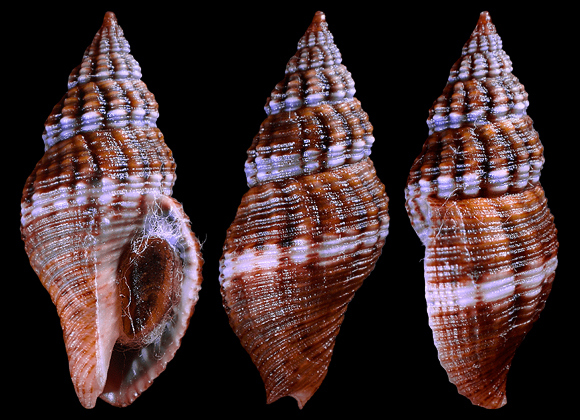
Protonym: Buccinum assimile.
The shell has a unique colour, more or less pronounced: dark background, radial costae lighter. There is a white band at the periphery of the whorls. The spiral sculpture is thinner than in the other mediterranean species; it consists of five spiral cords per whorl, separated from each other by secondary cords. The radial sculpture is less nodulose than in dorbignyi, scaber or scacchianus. – Above: a specimen from 1m deep, under rock, Stagno di Cagliari (Santa Gilla), S. Sardinia. 18mm.
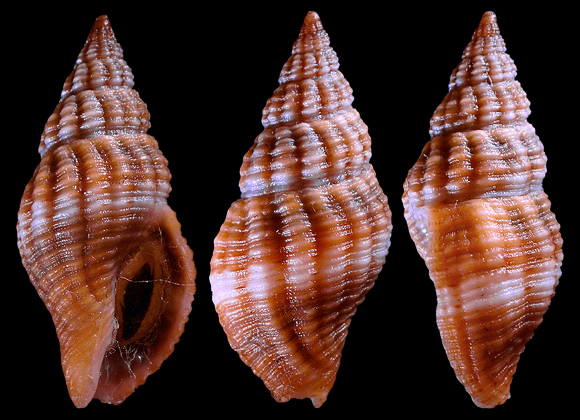
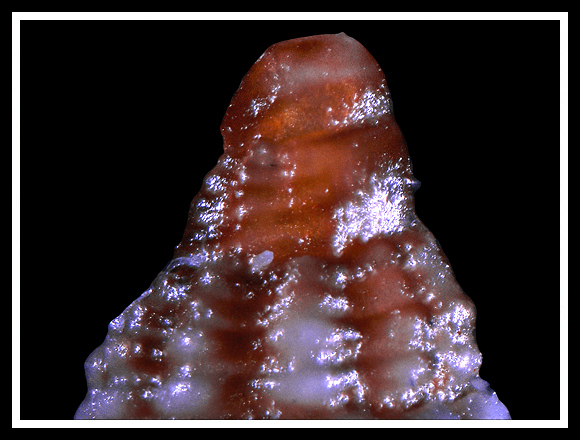
This feature helps to make the difference with the zanclean fossil Aplus pseudoassimilis Brunetti & Della Bella, 2016.
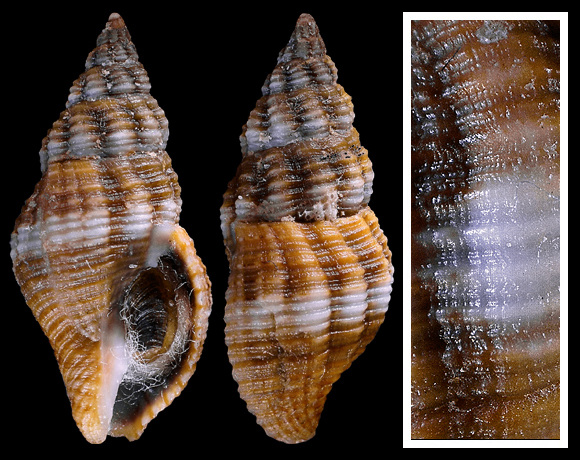
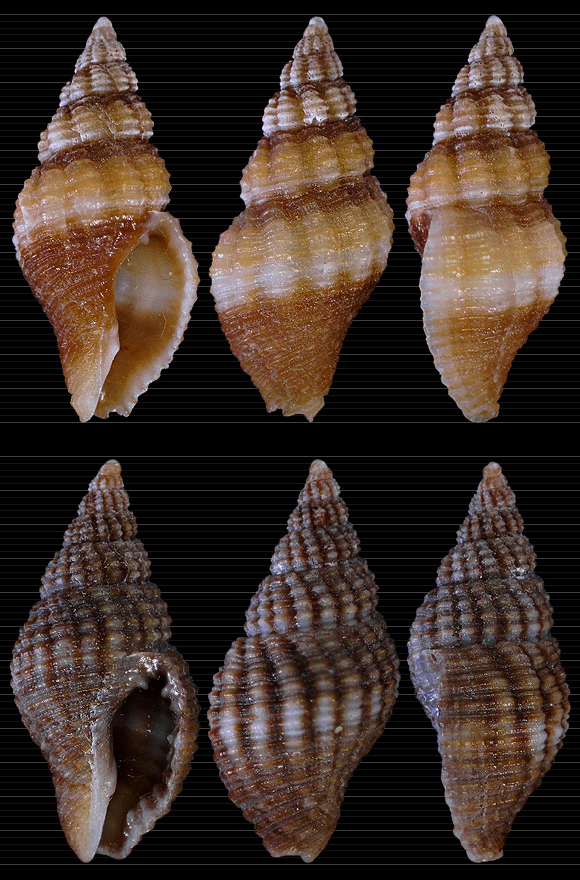
Variations of colour and sculpture in specimens collected at 10-15m deep, Sardina del Norte, Gran Canaria. Sizes around 12mm. This is Dautzenberg who discovered this species in a collection of shells from this area: « M. Tryon considered C. assimilis as a variant of C. Orbignyi Payr., from Mediterranean; but we feel that these forms are different enough to justify the maintaining of the two species. We do not believe that this Mollusc, well-known in Sénégal, has been indicated so far as living in the Canary Islands. » – Ph. Dautzenberg: “Récoltes malacologiques de M. l’abbé Culliéret aux Îles Canaries et au Sénégal”, Mémoires de la Société zoologique de France vol. III, Paris 1890, p.152.